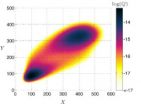(Press-News.org) Ban cigarette filters. Start a deposit-return scheme for used butts. Hold manufacturers responsible for clean-ups. Place warnings on packets about the impact of simply flicking one's used cigarettes away. These are among the policy measures that Thomas Novotny of the San Diego State University in the US and Elli Slaughter advocate to curb the environmental harm done through the large-scale littering of cigarette butts, packaging and matches. The suggestions are part of a review article in Springer's journal Current Environmental Health Reports.
Cigarette butts and other tobacco product waste are the items that are most commonly picked up during urban and beach clean-ups worldwide. An estimated 4.5 trillion of the annual 6 trillion cigarettes sold worldwide do not end up in a dustbin or ashtray, but are simply flicked away along a roadside or on a pavement. The ban on indoor smoking may have exacerbated this.
Tobacco waste products contain the same toxins, nicotine, pesticides and carcinogens found in cigarettes and cigars, and can contaminate the environment and water sources. Studies show that the chemicals within cigarettes, such as arsenic, nicotine, lead and ethyl phenol, could leach into salt and fresh water and be acutely toxic to aquatic micro-organisms and fish.
It is not only the cigarette ingredients that harm the environment, but also the materials they are made of. Plastic cigarette filters are practically non-biodegradable and can leach chemicals for up to ten years. In the US alone an estimated 49.8 million kilograms of filters are discarded annually. This excludes the weight of remnant butt tobacco, discarded packages, lighters and matches, and other tobacco products such as cigars and smokeless tobacco.
The researchers call filtered cigarettes a "farce" in terms of consumer safety, with a recent National Cancer Institute review showing that these are not healthier or safer than non-filtered ones. Novotny and Slaughter therefore propose a ban on filtered cigarettes. Jonathan Samet from the University of Southern California and the editor of the article recently advised the California State Legislature that "…it is evident that filtered cigarettes have had little impact on the risks of smoking over the last half century."
Because existing anti-littering laws have not changed smokers' littering habits, Novotny and Slaughter ask for new environmental interventions and partnerships between tobacco control and environmental groups. They propose litigation to hold the tobacco industry legally responsible for clean-up and nuisance costs associated with their products, advocating the use of labels on cigarette packages about the toxicity of discarded butts, and a deposit-return scheme similar to that used for glass and metal beverage containers. Other options include requesting the industry to pay an advanced recycling fee or to take back all discarded tobacco waste products.
"Tobacco waste products are ubiquitous, environmentally hazardous and a significant community nuisance," says Novotny. "With two-thirds of all smoked cigarettes, numbering in the trillions globally, being discarded into the environment each year, it is critical to consider the potential toxicity and remediation of these waste products."
INFORMATION:
Reference:
Novotny, T.E. & Slaughter, E. (2014). Tobacco Product Waste: An Environmental Approach To Reduce Tobacco Consumption. Current Environmental Health Reports. DOI 10.1007/s40572-014-0016-x.
Ban cigarette filters to save the environment, suggest researchers
Trillions of cigarettes smoked worldwide do not end up in an ashtray, but litter the environment
2014-05-06
ELSE PRESS RELEASES FROM THIS DATE:
Neutron star magnetic fields: Not so turbulent, after all?
2014-05-06
Neutron stars, the extraordinarily dense stellar bodies created when massive stars collapse, are known to host the strongest magnetic fields in the universe -- as much as a billion times more powerful than any man-made electromagnet. But some neutron stars are much more strongly magnetized than others, and this disparity has long puzzled astrophysicists.
Now, a study by McGill University physicists Konstantinos Gourgouliatos and Andrew Cumming sheds new light on the expected geometry of the magnetic field in neutron stars. The findings, published online April 29 in Physical ...
Detecting fetal chromosomal defects without risk
2014-05-06
Chromosomal abnormalities that result in birth defects and genetic disorders like Down syndrome remain a significant health burden in the United States and throughout the world, with some current prenatal screening procedures invasive and a potential risk to mother and unborn child.
In a paper published online this week in the Early Edition of PNAS, a team of scientists at the University of California, San Diego School of Medicine and in China describe a new benchtop semiconductor sequencing procedure and newly developed bioinformatics software tools that are fast, accurate, ...
Working to cure 'dry eye' disease
2014-05-06
WASHINGTON D.C. May 6, 2013 -- The eye is an exquisitely sensitive system with many aspects that remain somewhat of a mystery—both in the laboratory and in the clinic.
A U.S.-based team of mathematicians and optometrists is working to change this by gaining a better understanding of the inner workings of tear film distribution over the eye's surface. This, in turn, may lead to better treatments or a cure for the tear film disease known as "dry eye." They describe their work in the journal Physics of Fluids.
Dry eye disease afflicts millions of people worldwide, with ...
Predator-prey made simple
2014-05-06
WASHINGTON D.C. May 6, 2013 -- A team of U.K. researchers has developed a way to dramatically reduce the complexity of modeling "bistable" systems which involve the interaction of two evolving species where one changes faster than the other ("slow-fast systems"). Described in The Journal of Chemical Physics, the work paves the way for easier computational simulations and predictions involving such systems, which are found in fields as diverse as chemistry, biology and ecology.
Imagine, for instance, trying to predict how a population of whales would fare based on the ...
A cup of coffee a day may keep retinal damage away
2014-05-06
ITHACA, N.Y. – Coffee drinkers, rejoice! Aside from java's energy jolt, food scientists say you may reap another health benefit from a daily cup of joe: prevention of deteriorating eyesight and possible blindness from retinal degeneration due to glaucoma, aging and diabetes.
Raw coffee is, on average, just 1 percent caffeine, but it contains 7 to 9 percent chlorogenic acid, a strong antioxidant that prevents retinal degeneration in mice, according to a Cornell study published in the Journal of Agricultural and Food Chemistry.
The retina is a thin tissue layer on the ...
Expert guidance strengthens strategies to prevent most common and costly infection
2014-05-06
CHICAGO (May 6, 2014) – Surgical site infections (SSIs) are the most common and costly healthcare-associated infection (HAI) in the United States. New evidence-based recommendations provide a framework for healthcare institutions to prioritize and implement strategies to reduce the number of infections.
The guidelines are published in the June issue of Infection Control and Hospital Epidemiology and were produced in a collaborative effort led by the Society for Healthcare Epidemiology of America, the Infectious Diseases Society of America, the American Hospital Association, ...
New expert guidelines aim to focus hospitals' infectious diarrhea prevention efforts
2014-05-06
CHICAGO (May 6, 2014) – With rates of Clostridium difficile (C. difficile) now rivaling drug-resistant Methicillin-resistant Staphylococcus aureus (MRSA) as the most common bacteria to cause healthcare-associated infections, new expert guidance encourages healthcare institutions to implement and prioritize prevention efforts for this infectious diarrhea. The guidelines are published in the June issue of Infection Control and Hospital Epidemiology.
The new practice recommendations are a part of Compendium of Strategies to Prevent Healthcare-Associated Infections in Acute ...
As kids age, snacking quality appears to decline
2014-05-06
PROVIDENCE, R.I. [Brown University] — The average U.S. child snacks three times a day. Concerned about the role of snacking in obesity, a team of researchers set out to explore how eating frequency relates to energy intake and diet quality in a sample of low-income, urban schoolchildren in the Boston area. They expected that snacking would substantially contribute to kids' overall energy intake, and the new data confirm that. But they were surprised that the nutritional value of snacks and meals differed by age.
The findings, led by first author E. Whitney Evans, a ...
Planck reveals magnetic fingerprint of our galaxy
2014-05-06
The team—which includes researchers from the University of British Columbia and the Canadian Institute for Theoretical Astrophysics (CITA) at the University of Toronto—created the map using data from the Planck Space Telescope. Since 2009, Planck has charted the Cosmic Microwave Background (CMB), the light from the Universe a mere 380,000 years after the Big Bang.
But Planck also observes light from much closer than the farthest reaches of time and space. With an instrument called the High Frequency Instrument (HFI), Planck detects the light from microscopic dust particles ...
GW researcher discovers the mechanisms that link brain alertness and increased heart rate
2014-05-06
WASHINGTON (May 6, 2014) — George Washington University (GW) researcher David Mendelowitz, Ph.D., was recently published in the Journal of Neuroscience for his research on how heart rate increases in response to alertness in the brain. Specifically, Mendelowitz looked at the interactions between neurons that fire upon increased attention and anxiety and neurons that control heart rate to discover the "why," "how," and "where to next" behind this phenomenon.
"This study examines how changes in alertness and focus increase your heart rate," said Mendelowitz, vice chair ...
LAST 30 PRESS RELEASES:
Why nail-biting, procrastination and other self-sabotaging behaviors are rooted in survival instincts
Regional variations in mechanical properties of porcine leptomeninges
Artificial empathy in therapy and healthcare: advancements in interpersonal interaction technologies
Why some brains switch gears more efficiently than others
UVA’s Jundong Li wins ICDM’S 2025 Tao Li Award for data mining, machine learning
UVA’s low-power, high-performance computer power player Mircea Stan earns National Academy of Inventors fellowship
Not playing by the rules: USU researcher explores filamentous algae dynamics in rivers
Do our body clocks influence our risk of dementia?
Anthropologists offer new evidence of bipedalism in long-debated fossil discovery
Safer receipt paper from wood
Dosage-sensitive genes suggest no whole-genome duplications in ancestral angiosperm
First ancient human herpesvirus genomes document their deep history with humans
Why Some Bacteria Survive Antibiotics and How to Stop Them - New study reveals that bacteria can survive antibiotic treatment through two fundamentally different “shutdown modes”
UCLA study links scar healing to dangerous placenta condition
CHANGE-seq-BE finds off-target changes in the genome from base editors
The Journal of Nuclear Medicine Ahead-of-Print Tip Sheet: January 2, 2026
Delayed or absent first dose of measles, mumps, and rubella vaccination
Trends in US preterm birth rates by household income and race and ethnicity
Study identifies potential biomarker linked to progression and brain inflammation in multiple sclerosis
Many mothers in Norway do not show up for postnatal check-ups
Researchers want to find out why quick clay is so unstable
Superradiant spins show teamwork at the quantum scale
Cleveland Clinic Research links tumor bacteria to immunotherapy resistance in head and neck cancer
First Editorial of 2026: Resisting AI slop
Joint ground- and space-based observations reveal Saturn-mass rogue planet
Inheritable genetic variant offers protection against blood cancer risk and progression
Pigs settled Pacific islands alongside early human voyagers
A Coral reef’s daily pulse reshapes microbes in surrounding waters
EAST Tokamak experiments exceed plasma density limit, offering new approach to fusion ignition
Groundbreaking discovery reveals Africa’s oldest cremation pyre and complex ritual practices
[Press-News.org] Ban cigarette filters to save the environment, suggest researchersTrillions of cigarettes smoked worldwide do not end up in an ashtray, but litter the environment

